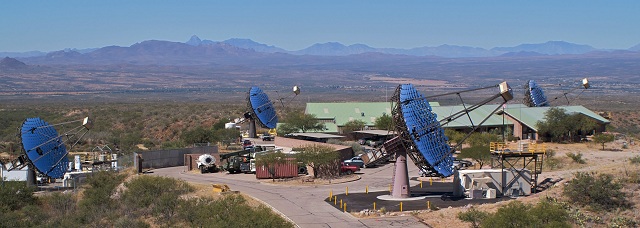Antimatter in Nature
Another place where positrons are observed is in nuclear decay. Some radioactive materials undergo what is called beta decay. When this happens, a proton is converted into a neutron, which stabilizes the nucleus. The specifics of beta decay are not particularly crucial to understanding antimatter, so we won't go into detail. What matters for us is that in the decay process, a positron is emitted from the nucleus. Antimatter is produced regularly in nature by this process. [1]
Out of This World
Antiprotons, as mentioned before, are also found in nature. Out in the vastness of space, complex processes can result in the production of these particles, which are then found in cosmic rays entering our atmosphere. These particles are incredibly few. We'll talk more about them when we discuss some of the more advanced problems antimatter gives us.[1]

Picture above, the VERITAS Radiotelescope array in Arizona[3]